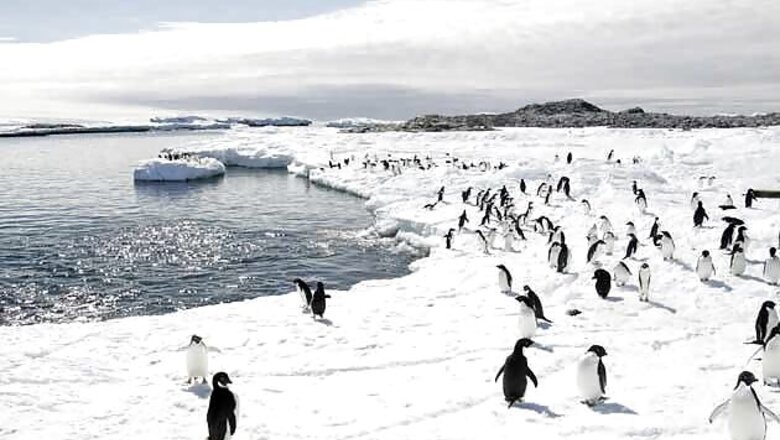
views
London: Scientists have discovered that unlike the dramatic losses in the Arctic, the Antarctic sea ice cover has increased under the effects of climate change. The first direct evidence that marked changes to Antarctic sea ice drift occurring over the last 20 years in response to changing winds has been explained by scientists from NERC's British Antarctic Survey (BAS) and NASA's Jet Propulsion Laboratory (JPL), Pasadena California.
Maps created by JPL using over 5 million individual daily ice motion measurements captured over a period of 19 years by four US Defence Meteorological satellites show, for the first time, the long-term changes in sea ice drift around Antarctica. "Until now these changes in ice drift were only speculated upon, using computer models of Antarctic winds. This study of
direct satellite observations shows the complexity of climate change," Lead author, Dr Paul Holland of BAS said.
"The total Antarctic sea-ice cover is increasing slowly, but individual regions are actually experiencing much larger gains and losses that are almost offsetting each other overall. "We now know that these regional changes are caused by changes in the winds, which in turn affect the ice cover through changes in both ice drift and air temperature. The changes in ice drift also suggest large changes in the ocean surrounding Antarctica, which is very sensitive to the cold and salty water produced by sea-ice growth," said Holland.
He noted that "sea ice is constantly on the move; around Antarctica the ice is blown away from the continent by strong northward winds. Since 1992 this ice drift has changed. In some areas the export of ice away from Antarctica has doubled, while in others it has decreased significantly." Sea ice plays a key role in the global environment, reflecting heat from the sun and providing a habitat for marine life. At both poles sea ice cover is at its minimum during late summer.
However, during the winter freeze in Antarctica this ice cover expands to an area roughly twice the size of Europe. Ranging in thickness from less than a metre to several metres, the ice insulates the warm ocean from the frigid atmosphere above. The Arctic has experienced dramatic ice losses in recent
decades while the overall ice extent in the Antarctic has increased slightly.
However, this small Antarctic increase is actually the result of much larger regional increases and decreases, which are now shown to be caused by wind-driven changes.




















Comments
0 comment